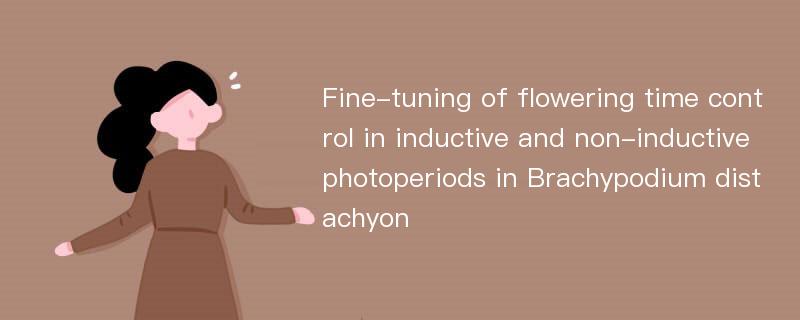
论文摘要
Monitoring day length is one of the most important environmental cue for plant decision of reproductive transition. Facultative long-day plants, including Arabidopsis and Brachypodium, trigger rapid flowering in long-day conditions(LDs) while delay flowering under short-day conditions(SDs). Under LDs, FLOWERING LOCUS T(FT) mRNA is induced by a key transcriptional regulator CONSTANS(CO) to promote flowering. Under SDs, although the flowering time is much longer than that in LDs, plants can eventually trigger flowering for reproduction. So far, the molecular basis of flowering initiation in SDs is elusive. In Brachypodium, we characterize a SD-induced FT ortholog, FT5, that promotes flowering in SDs but inhibits flowering in LDs. Similar as photoperiod-inductive FT1, FT5 can interact with FD1 to form a flowering activation complex(FAC), but the floral initiation efficiency of FT5-FAC is much lower than that of FT1-FAC, thereby resulting in a positive role for FT5 in promoting floral transition when FT1 is not expressed, while a dominant-negative role when FT1 accumulates significantly. We accelerated flowering under LDs. We will discuss the alternative molecular nature of flowering onset under SDs and LDs.
论文目录
文章来源
类型: 国内会议
作者: Zhengrui Qin,Yuxue Bai,Liang Wu
来源: 第三届全国植物开花·衰老与采后生物学大会 2019-11-04
年度: 2019
分类: 基础科学
专业: 生物学,生物学,生物学
单位: College of Agriculture and Biotechnology, Zhejiang University
分类号: Q943.2;Q945
DOI: 10.26914/c.cnkihy.2019.003308
页码: 22
总页数: 1
文件大小: 398k
下载量: 6
